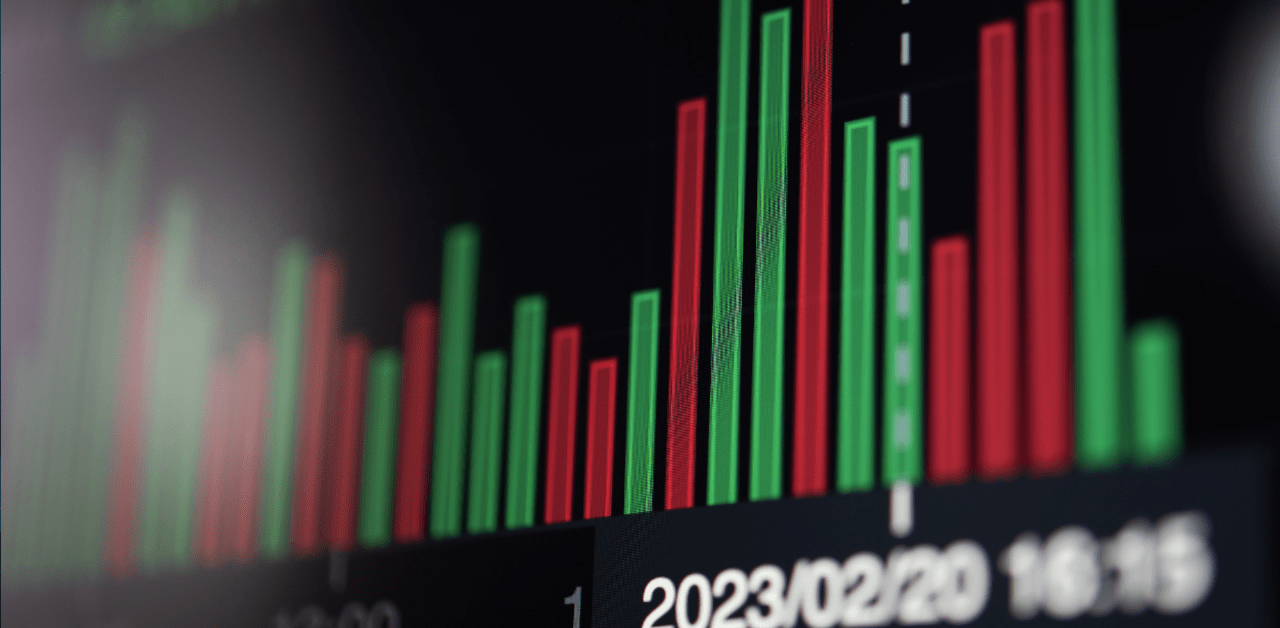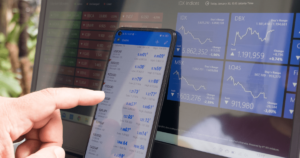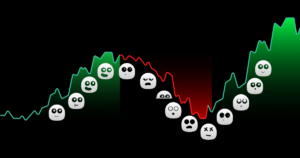Volume profile trading is a powerful tool that can help traders make informed trading decisions by analyzing the distribution of traded volume across different price levels. By understanding volume profile analysis, traders can gain valuable insights into market dynamics and improve their trading performance.
Volume profile analysis involves examining the volume of trades that occur at specific price levels, providing valuable information about market interest and activity. This analysis helps traders identify support and resistance levels, recognize market acceptance or rejection at particular prices, and anticipate potential price reversals.
A crucial concept in volume profile analysis is the value area, which represents the price range encompassing a significant portion of trading activity. Traders can use the value area high and value area low to identify potential areas of support and resistance within the value area, aiding in their trading strategies.
In volume profile analysis, different profile shapes offer unique insights into market sentiment. The D-shape, b-shape, P-shape, and B-shape are distinct profiles that indicate various market conditions. Understanding these shapes can help traders identify potential breakout opportunities, trend reversals, and areas of support or resistance.
To effectively incorporate volume profile analysis into trading strategies, traders should consider using multiple time frames to gain a comprehensive view of market dynamics. Combining volume profile analysis with other technical analysis tools can provide a more robust trading approach. Additionally, staying informed about news events that could impact market trends is essential for utilizing volume profile analysis effectively.
Key Takeaways:
- Volume profile trading involves analyzing traded volume across different price levels to make informed trading decisions.
- Volume profile analysis helps identify support and resistance levels, anticipate price reversals, and determine market acceptance or rejection at specific prices.
- The value area is a vital concept in volume profile analysis, representing the price range with significant trading activity.
- Different profile shapes offer insights into market sentiment and can be used to identify breakout opportunities, trend reversals, and areas of support or resistance.
- Traders can enhance their trading performance by using multiple time frames, combining volume profile analysis with other technical analysis tools, and staying informed about market-relevant news events.
Understanding Volume Profile Analysis
Volume profile analysis provides traders with valuable insights into market dynamics through the distribution of traded volume and the identification of key price levels. By analyzing the volume at different price levels, traders can gain a deeper understanding of areas of market interest and activity. This analysis helps traders identify support and resistance levels, determine market acceptance or rejection at specific prices, and anticipate potential price reversals.
The concept of the value area is crucial in volume profile analysis. The value area represents the price range that encompasses a significant portion of the trading activity. It is determined by calculating the range within which a specified percentage of the total volume was traded. The value area high and value area low, which indicate the upper and lower boundaries of the value area, help traders identify potential areas of support and resistance within the value area.
When analyzing volume profile, traders also need to consider different profile shapes. These shapes offer unique clues about market sentiment and can be categorized into four distinct shapes: D-shape, b-shape, P-shape, and B-shape. Each shape signifies different market conditions and can be used to identify potential breakout opportunities, trend reversals, and areas of support or resistance.
| Profile Shape | Market Sentiment | Key Insights |
|---|---|---|
| D-shape | Bullish | Potential breakout to the upside, strong buying activity |
| b-shape | Bearish | Potential breakout to the downside, strong selling activity |
| P-shape | Neutral | Consolidation, market indecision |
| B-shape | Unstable | Market imbalance, potential reversal or trend continuation |
To effectively incorporate volume profile into trading strategies, traders can consider using multiple time frames to confirm key levels, combining volume profile analysis with other technical analysis tools for additional confirmation, and staying informed about news events that could impact market trends. By applying volume profile analysis, traders can improve their market analysis, identify key price levels, determine trend strength, and spot trading opportunities to enhance their trading performance.
Incorporating Volume Profile into Trading Strategies
To make the most of volume profile analysis, traders can employ various strategies such as using multiple time frames, integrating it with other technical tools, and staying updated on relevant news events. By doing so, traders can enhance their market analysis, identify key price levels, determine trend strength, and spot trading opportunities.
One effective strategy is to utilize multiple time frames when analyzing volume profile. This allows traders to gain a comprehensive view of market activity across different time periods. By analyzing volume profiles on both shorter and longer time frames, traders can identify areas of high interest and strong support or resistance levels.
Integrating volume profile analysis with other technical tools can also enhance trading strategies. Traders can combine volume profile with trend lines, moving averages, or oscillators to validate their trading decisions. For example, if volume profile analysis reveals a significant volume accumulation at a specific price level, and a trend line confirms a breakout above that level, it may signal a strong buying opportunity.
Staying updated on relevant news events is another crucial aspect of incorporating volume profile into trading strategies. News events can significantly impact market trends and volume levels. By being aware of key economic data releases, earnings reports, or geopolitical developments, traders can anticipate potential changes in market dynamics and adjust their trading strategies accordingly.
Advanced Volume Profile Techniques
In addition to the strategies mentioned above, there are advanced techniques that traders can employ to further enhance their trading performance with volume profile analysis. These techniques include analyzing volume profiles within specific time periods, identifying volume gaps, and using volume profile in conjunction with other indicators.
Analyzing volume profiles within specific time periods allows traders to focus on short-term market dynamics and identify intraday trading opportunities. By zooming in on shorter time frames, traders can pinpoint areas of high volume activity, which can provide valuable insights into market sentiment and potential price reversals.
Identifying volume gaps, which occur when there is a significant difference in volume between two adjacent price levels, can help traders identify areas where price may move quickly due to limited resistance. Volume gaps can act as potential breakout or breakdown areas, offering traders profitable trading opportunities.
Finally, combining volume profile analysis with other indicators such as moving averages or oscillators can provide additional confirmation for trading decisions. For example, if volume profile analysis indicates a strong support level coinciding with a bullish crossover on a moving average, it may signal a high-probability buying opportunity.
| Key Strategies for Incorporating Volume Profile |
|---|
| Use multiple time frames to gain a comprehensive view of market activity. |
| Integrate volume profile with other technical tools for validation. |
| Stay updated on relevant news events to anticipate market changes. |
| Analyze volume profiles within specific time periods for intraday trading opportunities. |
| Identify volume gaps for potential breakout or breakdown areas. |
| Combine volume profile analysis with other indicators for additional confirmation. |
Enhancing Trading Performance with Volume Profile Analysis
By utilizing volume profile indicators, charts, and analyzing trend reversals, traders can significantly enhance their trading performance and make well-informed decisions in the market.
Volume profile analysis provides traders with valuable insights into market dynamics, allowing them to identify key price levels and determine trend strength. One effective way to incorporate volume profile analysis into trading strategies is by using volume profile indicators. These indicators help traders visualize the distribution of volume across different price levels, highlighting areas of market interest and activity. By identifying high-volume price levels, traders can pinpoint potential areas of support and resistance, enabling them to enter and exit trades with precision.
In addition to volume profile indicators, traders can also utilize volume profile charts to gain a deeper understanding of market sentiment. Different profile shapes, such as the D-shape, b-shape, P-shape, and B-shape, provide valuable clues about market conditions. For example, a D-shape profile suggests a potential trend reversal, while a b-shape profile indicates consolidation or a period of low volatility. By observing these profile shapes on volume profile charts, traders can anticipate potential breakout opportunities and make informed trading decisions.
Analyzing trend reversals is another essential aspect of volume profile analysis. By studying the behavior of volume and price at key support and resistance levels, traders can identify potential trend reversals and adapt their trading strategies accordingly. Volume profile analysis can help traders spot areas of market acceptance or rejection at specific prices, providing valuable insights into the strength and duration of trends. Armed with this information, traders can confidently enter or exit trades at the right time, maximizing their trading performance.
| Key Takeaways: |
|---|
| Volume profile analysis is a powerful tool for traders to understand market dynamics and make informed trading decisions. |
| By utilizing volume profile indicators and charts, traders can identify key price levels, determine trend strength, and spot potential breakout opportunities. |
| Analyzing trend reversals using volume profile analysis helps traders adapt their trading strategies and maximize their trading performance. |
Conclusion
In conclusion, mastering volume profile trading strategies can empower traders to make informed decisions, identify key price levels, and maximize their market gains.
Volume profile analysis provides valuable insights into market dynamics by analyzing the distribution of traded volume across different price levels. By understanding areas of market interest and activity, traders can identify support and resistance levels, determine market acceptance or rejection at specific prices, and anticipate potential price reversals.
The value area, which represents the price range that encompasses a significant portion of the trading activity, is a crucial concept in volume profile analysis. By identifying the value area high and value area low, traders can pinpoint potential areas of support and resistance within the value area.
Additionally, different profile shapes in volume profile analysis offer unique clues about market sentiment. The D-shape, b-shape, P-shape, and B-shape profiles each signify different market conditions and can be used to identify breakout opportunities, trend reversals, and areas of support or resistance.
To effectively incorporate volume profile into trading strategies, traders should consider using multiple time frames, combining it with other technical analysis tools, and staying informed about news events that could impact market trends. By applying volume profile analysis, traders can enhance their market analysis, identify key price levels, determine trend strength, and spot trading opportunities to improve their overall performance.
FAQ
What is volume profile analysis?
Volume profile analysis is a powerful tool for traders to understand market dynamics by analyzing the distribution of traded volume across different price levels. It helps identify support and resistance levels, determine market acceptance or rejection at specific prices, and anticipate potential price reversals.
What is the value area in volume profile analysis?
The value area represents the price range that encompasses a significant portion of the trading activity. It consists of the value area high and value area low, which indicate the upper and lower boundaries of the value area. Traders use these boundaries to identify potential areas of support and resistance within the value area.
What are the different profile shapes in volume profile analysis?
There are four distinct profile shapes in volume profile analysis: D-shape, b-shape, P-shape, and B-shape. Each shape signifies different market conditions and can be used to identify potential breakout opportunities, trend reversals, and areas of support or resistance.
How can traders incorporate volume profile into their trading strategies?
Traders can incorporate volume profile into their trading strategies by using multiple time frames, combining it with other technical analysis tools, and staying informed about news events that could impact market trends. This allows traders to improve their market analysis, identify key price levels, determine trend strength, and spot trading opportunities to enhance their trading performance.








